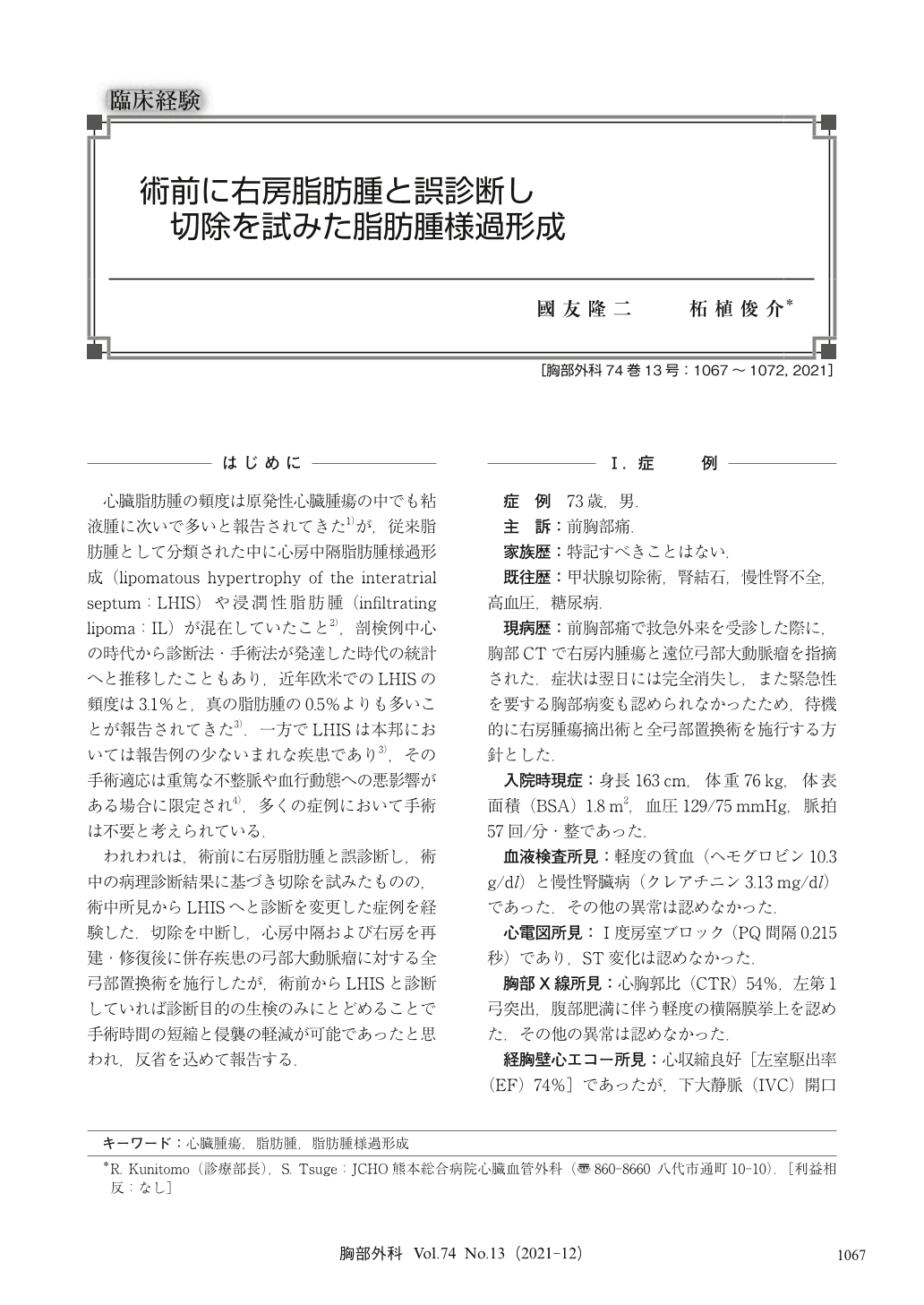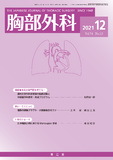Japanese
English
- 有料閲覧
- Abstract 文献概要
- 1ページ目 Look Inside
- 参考文献 Reference
心臓脂肪腫の頻度は原発性心臓腫瘍の中でも粘液腫に次いで多いと報告されてきた1)が,従来脂肪腫として分類された中に心房中隔脂肪腫様過形成(lipomatous hypertrophy of the interatrial septum:LHIS)や浸潤性脂肪腫(infiltrating lipoma:IL)が混在していたこと2),剖検例中心の時代から診断法・手術法が発達した時代の統計へと推移したこともあり,近年欧米でのLHISの頻度は3.1%と,真の脂肪腫の0.5%よりも多いことが報告されてきた3).一方でLHISは本邦においては報告例の少ないまれな疾患であり3),その手術適応は重篤な不整脈や血行動態への悪影響がある場合に限定され4),多くの症例において手術は不要と考えられている.
A 73-year-old man with a right atrial tumor and a distal aortic arch aneurysm was scheduled for tumor resection and total arch replacement (TAR). Although the tumor was diagnosed as an intra-atrial lipoma preoperatively, it could not be differentiated from an infiltrating lipoma on the basis of intraoperative pathological examination. We decided to completely excise the tumor. However, we found intraoperatively that the tumor was contiguous with the epicardial fat tissue of the heart, strongly suggesting a lipomatous hypertrophy of the interatrial septum (LHIS). Thus, we discontinued the resection, reconstructed the atrial septum and right atrial wall, and performed TAR with a frozen elephant trunk technique. Although the patient required temporary continuous hemodiafiltration because of his preoperative renal dysfunction, he was discharged 30 days postoperatively. If LHIS was the preoperative diagnosis, only an incisional biopsy was needed for diagnosing this case. However, LHIS is quite rare in Japan. Therefore, awareness of the disease and meticulous analysis of preoperative heart imaging are important to avoid an unnecessary surgery.

© Nankodo Co., Ltd., 2021


